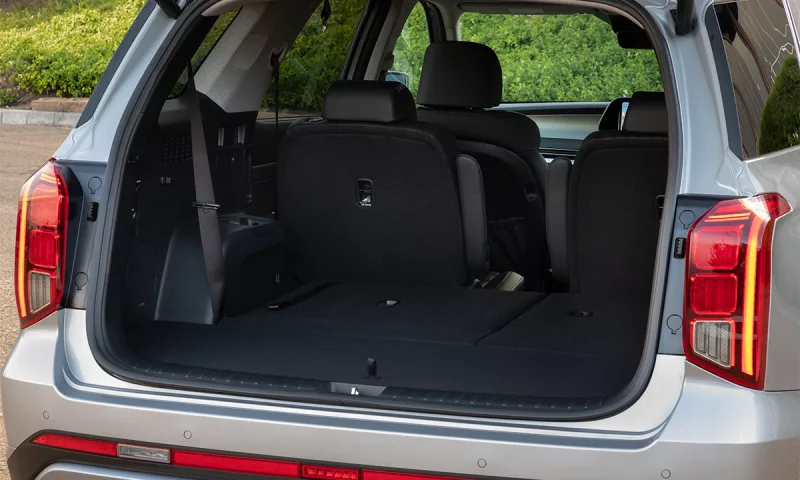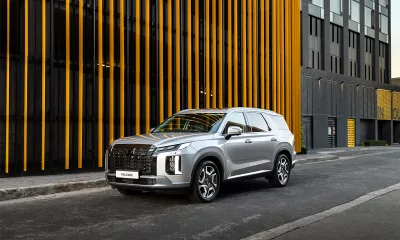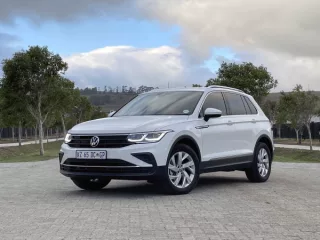What it lacks in off-roading ability, Hyundai’s remodelled Palisade makes up for in ramped-up luxury; then does a mike drop… writes Braam Peens after the launch of the flagship SUV.
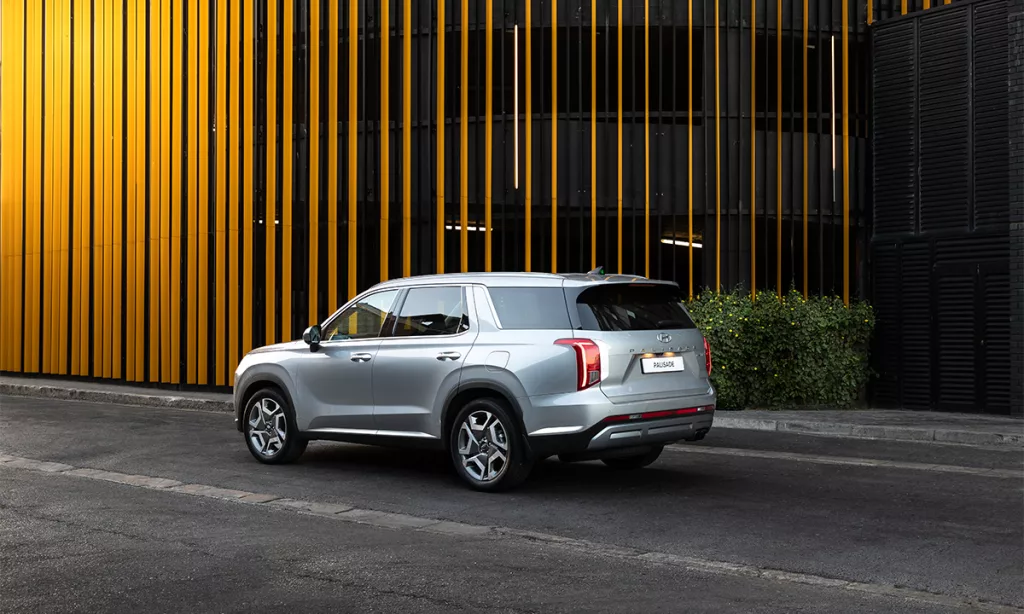
In parenting terms, because I can is the ultimate argument-ending put-down against headstrong offspring. That said, such obstinance is seldom a satisfying conclusion to any familial feud; and after all an arm around the shoulder generally achieves more than a threat of violence.
Related: 2023 Hyundai Palisade Elite AWD pricing
There’s also a second, less considered option: pampering your brood in the new Hyundai Palisade.
Freshly updated for 2023 after first landing on local soil in 2021, the most expensive and lavishly equipped Hyundai is henceforth available either as an eight-seater or a seven-seater – the latter configured as having a pair of captain’s chairs pampering the middle row passengers amidst acres of leg-stretching space. Both versions are priced at R1 099 900 each.
And pampered all shall be. The driver gets Hyundai’s new corporate (and in this case, heated) bowtie-shaped steering wheel-and-digitised instrumentation combination; as well as an infotainment screen upsized to 12-inches in diameter. Wireless charging capability has increased from 5W to 15W for more rapid reloading and what’s more, the premium-grade Infinity surround sound system blasting through a dozen of speakers can be simultaneously hooked up to not just one, but two – Bluetooth-connected devices.

Additionally, all USB-A ports have been upgraded to USB-C and all seats can be ventilated towards both ends of the temperature spectrum.
In line with ever-evolving safety technology, the Palisade now features the industry-standard array of forward collision assistance, adaptive cruise control, lane keeping and blind spot avoidance, automatic high beam adjustment and rear cross traffic alert that’s further enhanced by reverse parking collision avoidance.
Related: Hyundai confirms next-gen i10, i20 and i30 with ICE power
With the left-hand indicator activated, a rear facing camera integrated into the wing mirror affords a lane view towards the Palisade’s blind spot, the image of which is then temporarily displayed where the digitised speedometer usually resides.
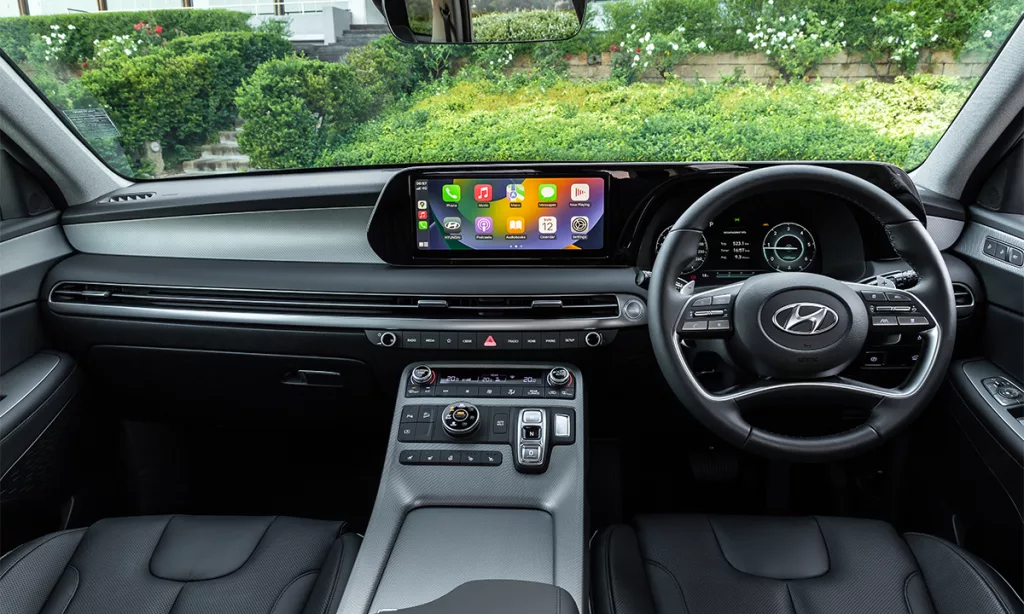
Finally, in the interest of stamping down authority, rear passengers can be addressed via microphone from the driver seat, in PA-style over the sound system; and conversely once suitably scolded (or soothed – take your pick, carrot or stick?) can be let to sleep courtesy of an audio setting that mutes the rear speakers.
Related: Could the Hyundai Venue Cargo be an alternative to unibody bakkie buyers?
There’s also something called Rear Occupant Alert that, through a flash of the lights and a honk of the horn, reminds exiting parents that they’ve forgotten their kids in the car. Bizarre meets beneficial.
Externally, the square-jaw refurbishment involves new bumpers and a blacked-out grille framed by a re-arranged daytime running light cluster. The 20-inch wheels remain untouched in diameter but sport a new design.

Similarly unaltered is the Palisade’s 2,2-litre turbodiesel/8-speed torque converter automatic gearbox pairing, which is shared with the Santa Fe and Staria; in addition to the Carnival and Sorento from sister brand Kia. Developing 142 kW @ 1750 r/min and 440 N.m, considering the Hyundai’s two-tonne heft, the engine provides adequate if not earth-shattering pulling power. Overseas, 3,5- and 3,8-litre petrol versions further extend the range. As in the similar-sized Jeep Grand Cherokee (of which a seven-seat derivative is expected this year), these provide throatier performance at the cost of misery at the fuel pump.
The Palisade’s power is sent on-demand to all four wheels when required. The commanding view from the cockpit (ground clearance is 203 mm), abetted by additional sound and shock absorbtion – provides a quiet and premium cabin feel on the road. Even in the absence of air suspension, the leanness of the 20-inch rubber seldom makes its presence felt.
Neither bus nor bundu basher, the Hyundai Palisade occupies an unpopulated segment of the market in offering all-wheel drive without locking differentials or low-range, but crossing over into a price point where all of its beefier adversaries – such as the Ford Everest and every off-roading Toyota that’s not a Fortuner – do.

Turndial-selectable mud, snow and sand modes are hoped to counter this argument but variable torque and traction maps can only go so far before mechanical intervention separates the bricks from the boulders: plainly, Hyundai’s soft-roading seven-seater’s happiest habitat is the blacktop.
Since launching in 2021, just over 250 Palisades have been sold locally. That’s barely a fraction of the tonnage of the equivalent seven-digit Toyota’s sold monthly, but perhaps that very persistence by Hyundai with the Palisade is what ultimately gives it its street cred.
Because they can.
Hyundai Palisade R2.2 Elite 8AT4 7-Seater Fast Facts
Price: R1 099 900
Engine: front-mounted, turbodiesel, 2 199cc, inline-four
Transmission: eight-speed automatic
Power: 142 kW @ 3800 r/min
Torque: 440 N.m @ 1750 – 2750 r/min
Driven wheels: All
0-100 km/h: 10,5 sec
Top speed: 190 km/h
Fuel consumption: 8,2 L/100km (combined)
CO2 emissions: 192 g/km
Rivals: Ford Everest, Toyota Land Cruiser 300 3.3 V6, Toyota Land Cruiser Prado 2.8 VX, Toyota Land Cruiser 76 4.D
